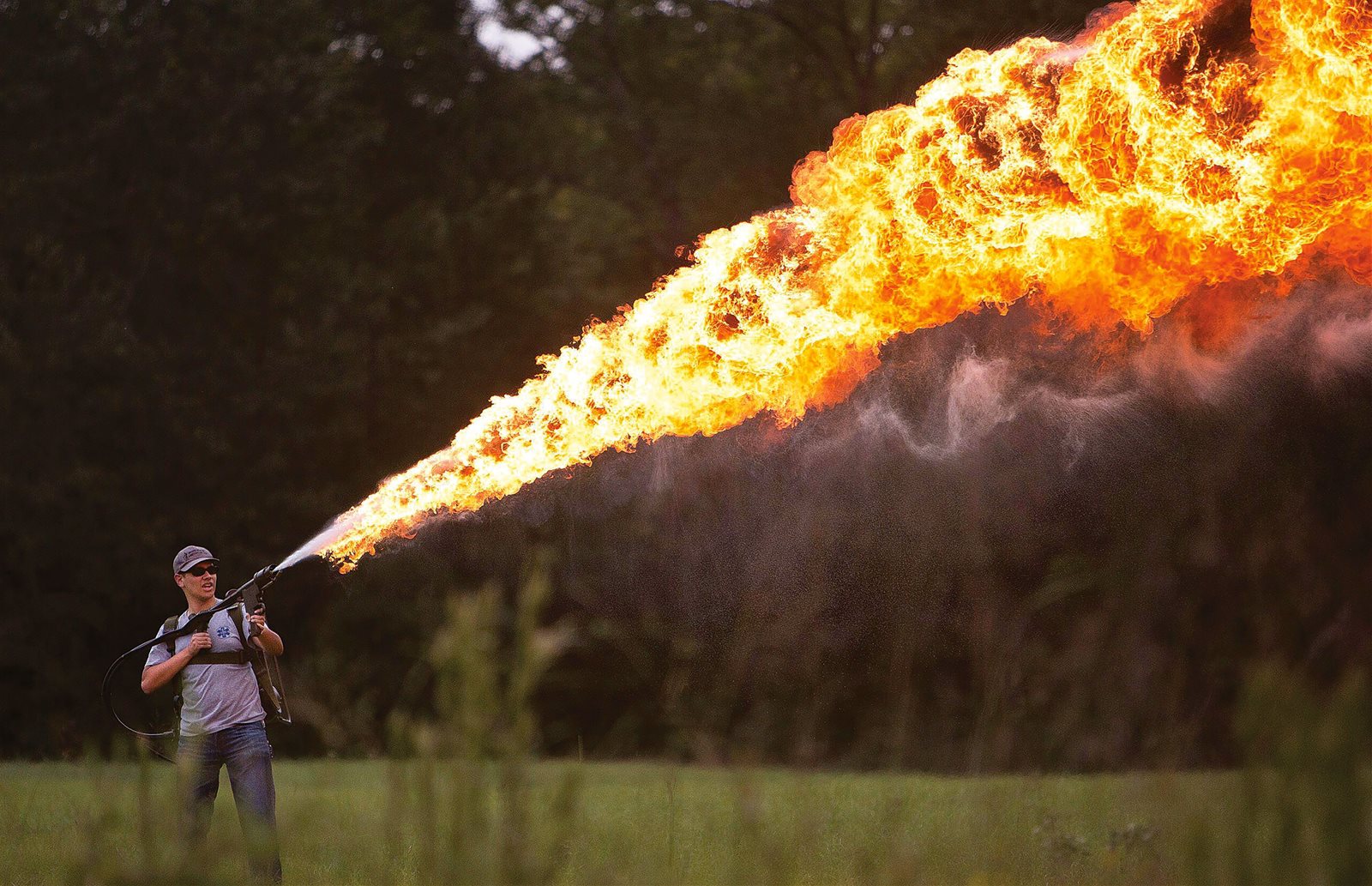
© Alamy / Getty / Illustration by Adrian Mann
Different forms of flamethrowers have existed for thousands of years, but the first handheld flamethrowers emerged during World War I. A creation of the German army, early handheld flamethrowers consisted of backpack-style fuel tanks with gun-like nozzles that, when ignited, released a torrent of flame towards their enemies. Used again in World War II and the Vietnam War as incendiary weapons, it wasn’t until 1980 that their use was restricted under Protocol III of the Geneva Convention. Today the main role of flamethrowers lies in land management, such as eradicating invasive plant species, clearing croplands and burning land to recycle nutrients.
For a flamethrower to work, it needs to supply two of the three basic ingredients that cause the reaction that leads to fire: heat and a fuel source. The third ingredient, oxygen, comes straight from the atmosphere. To supply the heat, flamethrowers supply an initial spark when the trigger is pulled and the fuel released.